Painting faux leather is a fantastic and cost-effective method to breathe new life into an old piece of furniture. Imagine transforming a worn-out armchair, a lackluster headboard, or any other furniture item that deserves a touch of creativity and care. By applying a fresh coat of paint, you have the power to completely revamp its appearance, whether you opt for a classic solid color or decide to unleash your artistic side with unique designs and patterns. To achieve a stunning, professional-looking finish, follow these expert tips and tricks on how to paint faux leather. Get ready to witness the incredible transformation that awaits!
Materials Needed
Before you start, be sure to gather all the necessary supplies for your faux leather painting project. You’ll need:
- A quality drop cloth or old sheet for protection
- Sandpaper (150 grit) and/or steel wool
- Soft lint-free rag
- High-grit sanding block
- Faux Leather Paint
- Clear Acrylic Sealer
- Synthetic brush of the appropriate size for your project
- Roller and/or foam brush[2]
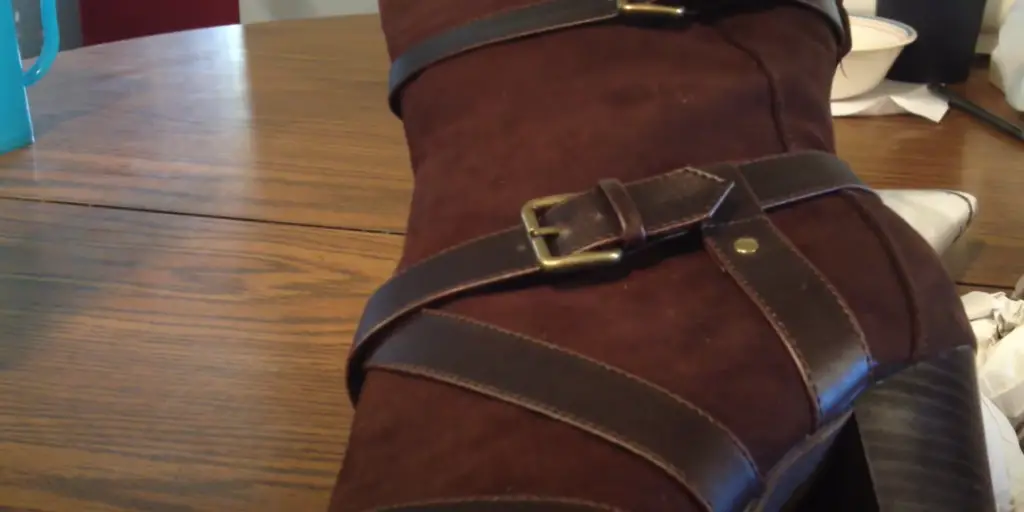
Step by Step Instructions
Step 1 – clean the faux leather
To begin, start by using a damp cloth to gently wipe away any accumulated dust or dirt from your faux leather item. Take your time and ensure that you cover all areas, paying attention to any particularly dirty spots. Once you’ve completed this initial cleaning, proceed to give it a thorough cleaning using a suitable faux leather cleaner or a mild soap solution. Remember to follow the instructions provided by the manufacturer for the best results. After cleaning, make sure to dry the item completely by allowing it to air dry or using a soft, absorbent cloth. Taking these steps will help keep your faux leather item looking clean and well-maintained.[2]
Step 2 – let it dry
After giving the item a thorough cleaning, it is important to allow it to dry for several hours. This will not only remove any remaining moisture but also ensure a smooth and professional-looking finish when you commence the painting process. By providing ample drying time, you give the paint a better chance to adhere properly and create a more flawless result. So, be patient and let the item dry completely before you embark on your painting journey. Your patience will be rewarded with a stunning and long-lasting finish that you can be proud of.[2]
Step 3 – paint on faux leather
Once your surface is completely dry, free from any moisture or residue, you can begin the exciting process of painting. Take a high-quality synthetic brush, carefully chosen for its ability to deliver smooth and precise strokes, and start applying an even layer of the specially formulated faux leather paint. As you go, pay close attention to every nook and cranny, ensuring that the paint adequately covers every intricate detail, creating a seamless and professional finish. Allow the paint to dry undisturbed for approximately 2 hours, giving it ample time to fully set and bond with the surface. This crucial waiting period sets the foundation for the subsequent steps, ensuring optimal results in your creative endeavor.[2]
Step 4 – topcoat application
To ensure the long-lasting protection of your painted faux leather item, it is recommended to apply a high-quality clear acrylic sealer. This sealer effectively seals the paint, providing enhanced resistance against wear and tear. For a professional-looking result, it is best to use a roller or foam brush during the application process, as this will yield a smoother finish. After applying the sealer, allow the topcoat to dry completely before using your newly painted piece of furniture. By following these steps, you can enjoy the beauty and durability of your faux leather item for years to come.[2]
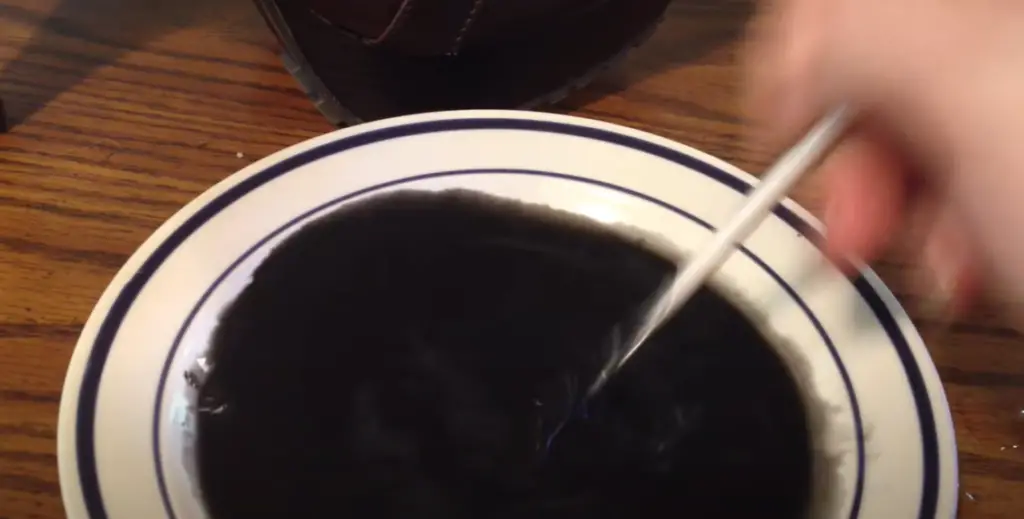
Painted Faux Leather Mirror Frame
If you want to take your faux leather painting project up a notch and create a truly stunning mirror frame, here’s how you can do it. First, carefully choose the shape and size of your frame, considering the overall aesthetics and the space where it will be displayed. You have the option of using pre-cut wooden frames, which can be easily found in craft stores, or you can unleash your creativity and craft a custom frame using plywood or other materials.
Once you have decided on the frame, take your time to prepare it for painting. Start by sanding it down gently to create a smooth surface, ensuring that the paint will adhere properly and look flawless. This step is crucial to achieve a professional-looking result.
Now, it’s time to bring your vision to life. Apply a layer of faux leather paint onto the frame, using a brush or a sponge for a textured effect. Allow the paint to dry completely, ensuring that the surface is even and free from any imperfections. For added durability and protection, consider applying an additional topcoat, which will safeguard the paint and make your mirror frame last even longer.
Once your masterpiece is complete, step back and admire your work. Your beautiful mirror frame, crafted with faux leather paint and adorned with decorative elements, will not only serve as a functional piece but also as a stunning focal point in any room. Enjoy the satisfaction of creating something unique and adding your personal touch to your home decor.[1]
Can You Use Acrylic Paint On Faux Leather Shoes?
Painting faux leather shoes is not only a fun and creative activity but also a cost-effective way to personalize your footwear. Whether you want to add vibrant colors or intricate patterns, the possibilities are endless. You can choose between using acrylic paint for a more precise and detailed approach or spray paint for a smooth and even coverage.
To ensure that your design stands the test of time, it’s important to take a few extra steps. Once you have finished painting, allow the shoes to dry completely before applying a clear sealer. This will provide an added layer of protection and help preserve the colors and design from wear and tear.
While faux leather can be a great alternative to genuine leather, it’s important to note that it may not be as durable. Therefore, when it comes time to clean your painted shoes, it’s best to spot clean them rather than submerging them in water. By doing so, you can minimize the risk of damaging your carefully crafted design and enjoy your customized footwear for a longer period of time.[1]
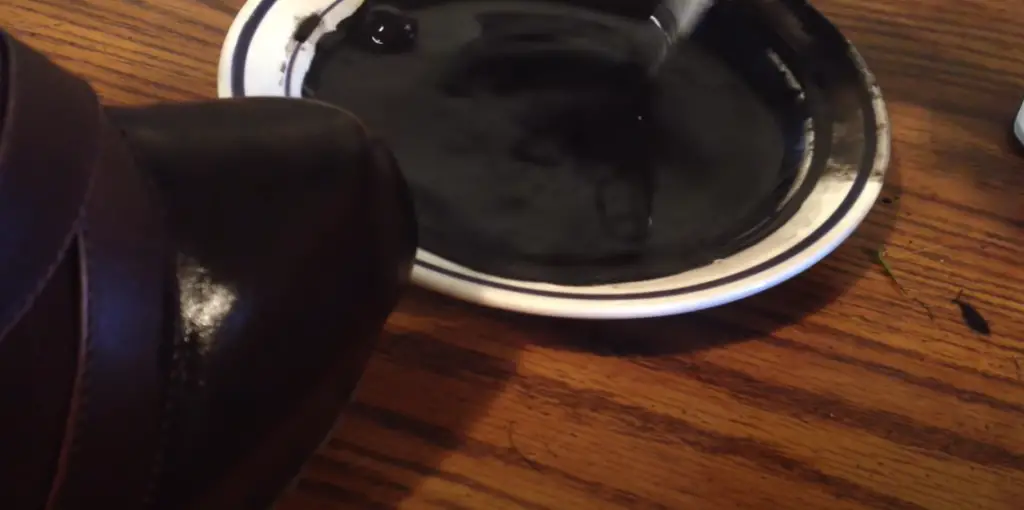
How To Paint Faux Leather Shoes With Acrylic Paint?
Step 1: Clean The Shoes
To begin, start by gently wiping your faux leather shoes with a damp cloth. This will help remove any dirt, dust, and oils that may have accumulated on the surface of the shoe, ensuring a clean and smooth base for the paint application. Taking the time to thoroughly clean the shoes beforehand will not only improve the adhesion of the paint but also help achieve a more professional and long-lasting result. So, remember to be meticulous in this step to ensure the best outcome for your faux leather shoe transformation![3]
Step 2: Prep The Shoes
Once you have finished cleaning the shoes, it’s time to start prepping them. Begin by lightly sanding the surface of your faux leather shoes with a piece of fine-grit sandpaper. This process will help create an even and consistent base for the paint to adhere better, as well as allow for any irregularities or blemishes in the leather to be smoothed out.[3]
Step 2: Apply Thinner With Acrylic Paint
If you are planning to use acrylic paint for your faux leather shoes, it is important to dilute the paint with a thinner solution. Doing this will create a more consistent and even coat of paint, leading to better results. A good rule of thumb for mixing the solution is 1 part of thinner to 2 parts of acrylic paint. Once the mixture is ready, apply a thin layer of paint onto the surface of your shoes and allow it to dry completely before adding additional coats.[3]
Step 3: Mask Particular Area With Masking Tape
When painting faux leather shoes, you may want to consider using masking tape. This will help keep certain areas of the shoe paint-free, allowing you to create intricate designs and patterns. Simply cover those sections with masking tape before applying the paint and then carefully remove it after the paint has dried completely.[3]
Step 4: Select Paintbrush And Start Painting
Once your shoes have been adequately prepared and the thinner mixture is ready, it’s time to start painting. Choose a high-quality brush that has soft bristles as this will help avoid any unevenness in the paint application. Depending on the design you want to achieve, use thin or thick brush strokes for added detail and texture. Allow each coat of paint to dry completely before adding additional coats.[3]
Step 5: Remove The Masking Tape
Once you have finished painting your faux leather shoes, it’s time to remove the masking tape. Gently peel it away from the surface of the shoe and discard it. This will reveal any details or patterns that you had carefully masked before.[3]
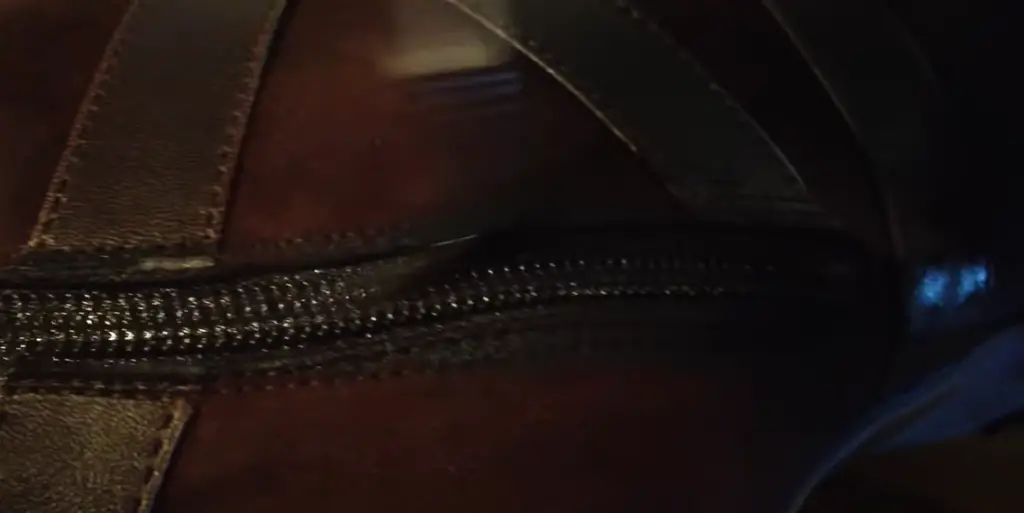
Step 6: Apply Finisher To Protect The Shoes
The last step in the painting process is to apply a finisher on your faux leather shoes. This will provide an additional layer of protection, ensuring that the paint stays vibrant and lasts for longer periods of time. It’s important to select a finisher product specifically designed for faux leather surfaces to avoid any damage or discoloration. Apply the finisher and let it dry completely before wearing your shoes.[3]
Step 7: Dry The Finisher
Finally, allow the finisher to dry completely before wearing your newly painted faux leather shoes. Once it has dried, you are ready to show off your creative masterpiece and enjoy a unique and stylish look. So let your imagination run wild and experiment with different colors, patterns, or designs to create something truly extraordinary![3]
Can You Use Acrylic Paint On A Faux Leather Jacket?
Painting a faux leather jacket can be a fun and rewarding project that allows you to unleash your creativity and personalize your wardrobe. By adding vibrant colors and unique designs, you can transform a plain jacket into a stunning fashion statement. Whether you prefer bold and eye-catching patterns or subtle and elegant accents, the possibilities are endless when it comes to painting faux leather. With a little practice and patience, you’ll be able to create a truly one-of-a-kind piece that reflects your own style and personality. So go ahead and dive into this exciting DIY adventure and watch as your jacket becomes a true work of art that will turn heads wherever you go![1]
Can You Paint Your Faux Leather Furniture With Acrylic Paint?
Painting your faux leather furniture can be an easy and cost-effective way to spruce up any living space. Whether you want to add a pop of color to an old sofa or give an ottoman a modern update, this DIY project is simple enough for even the most novice of painters. The key is selecting the right type of paint and being meticulous throughout the process. When it comes to acrylic paint, this is a great option for painting faux leather furniture as it is easy to apply and will create an even finish that won’t crack or peel over time. With a little patience and creativity, you can give your furniture a complete makeover without having to break the bank![1]
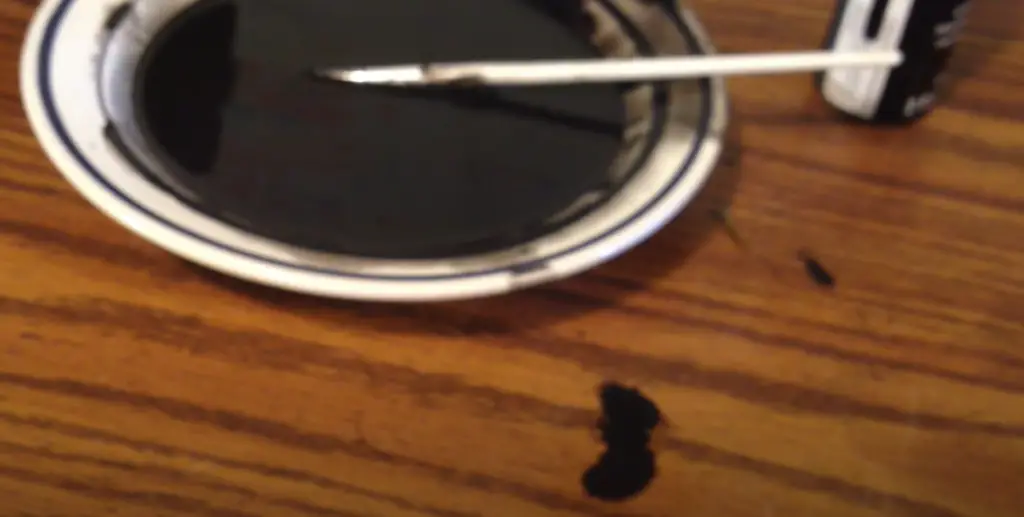
Can You Use Acrylic Paint To Dye Black Faux Leather?
Dyeing faux leather is a great way to add a unique and creative touch to any project. Whether you are looking for an unexpected color change or just want to update the look of your old furniture, this can be easily achieved with acrylic paint. Start by selecting the right type of paint; it should be specifically designed for use on faux leather. Next, prepare the leather surface by cleaning it and sanding down any rough spots. Once done, mix your chosen paint color with water to create a dye solution. Finally, apply the solution evenly on the leather with a brush and allow it to dry completely before wearing or using it. With just a few simple steps and some patience, you can give your old black faux leather projects an amazing new look![1]
Can You Use Acrylic Paint To Repair Faux Leather?
Repairing faux leather can often be done with acrylic paint, as long as it is specifically designed for use on faux leather surfaces. Start by cleaning the area you are repairing and then sand it down gently. This will help the paint adhere better to the surface and create a more even look when finished. Once done, mix your chosen color of acrylic paint with a thinner solution to create a paint mixture. Next, apply the mixture evenly on the area you are repairing and allow it to dry completely before touching it. With some patience and careful attention to detail, you will be able to repair your faux leather projects with ease![1]
FAQ
Can you paint or stain faux leather?
Yes, you can paint and/or stain faux leather. It is important to use a product specifically designed for use on faux leather surfaces to ensure that the finish does not crack or peel over time. Additionally, always test any products on an inconspicuous area before applying them directly to the surface of your project. This will help prevent any potential issues from arising in the future.
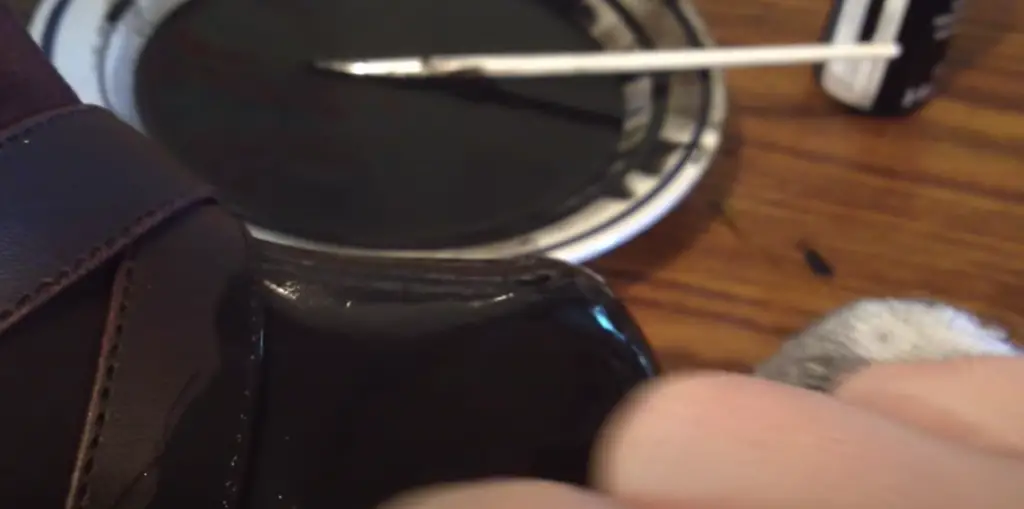
Will oil paint stay on faux leather?
Oil paint can be used on faux leather, however it is not as durable and long-lasting as acrylic paint. Additionally, oil paints take longer to dry and are much harder to work with due to their viscous consistency. For these reasons, it is usually better to use an acrylic paint specifically designed for use on faux leather surfaces when painting faux leather projects.
Can I paint faux leather with acrylic paint?
Yes, you can paint faux leather with acrylic paint. However, it is important to select a product specifically designed for use on faux leather surfaces to ensure that the finish does not crack or peel over time. Additionally, always test any products on an inconspicuous area before applying them directly to the surface of your project. This will help prevent any potential issues from arising in the future.
What can ruin faux leather?
Faux leather can be easily damaged by excessive exposure to moisture, as well as direct sunlight. Additionally, certain cleaning products and chemicals can also cause discoloration or other types of damage. For these reasons, it is important to keep faux leather surfaces out of direct contact with water, use a gentle cleaner when needed, and avoid exposing the material to strong chemicals or other materials that could cause it to deteriorate over time.
Why should you not buy faux leather?
Faux leather is often made from plastic materials, which can be less durable and long-lasting than genuine leather. Additionally, these plastic-based materials may contain toxins or other harmful chemicals that can irritate the skin or potentially cause health problems over time. For these reasons, it is important to research the product thoroughly before making a purchase in order to ensure that you are buying a quality faux leather product that is safe for you and your family.
What not to use on faux leather?
It is important to avoid using strong cleaners or harsh chemicals on faux leather, as they can cause discoloration and other types of damage. Additionally, you should never use any type of abrasive pad or tool when cleaning faux leather, as this could scratch or otherwise damage the surface. Instead, always use a mild soap and water solution in order to keep your faux leather looking its best.
What keeps faux leather from peeling?
Using a product specifically designed for use on faux leather surfaces will help keep the finish from peeling over time. Additionally, it is important to make sure that the surface is properly prepped prior to painting or staining with acrylic paint. This will ensure that the paint adheres well and creates an even finish that won’t crack or peel in the future. Finally, be sure to allow the paint or stain to dry completely before using it in order to ensure its longevity.
How do you refurbish faux leather?
Faux leather can be easily refurbished with just a few simple steps. Start by cleaning the surface with a mild soap and water solution, then sand down any rough spots. Once done, select an acrylic paint specifically designed for use on faux leather surfaces and mix it with enough water to create a dye solution. Finally, apply the solution evenly on the leather with a brush and allow it to dry completely before using or wearing it. With some patience, you can give your faux leather projects a new lease of life!
How long does faux leather last?
The lifespan of faux leather can vary depending on the type of product and how it is cared for. In general, a quality faux leather product should last up to 10 years with proper care and maintenance. However, exposure to moisture or direct sunlight can cause the material to deteriorate over time, so it is important to keep these factors in mind when caring for your faux leather items. With proper care, you can enjoy the look and feel of faux leather for many years to come!
Useful Video: dying synthetic leather and suede with acrylic paint
Conclusion
Painting and staining faux leather is a great way to repair or refurbish your items without having to purchase new ones. By choosing the right products for the job, you can ensure that your projects will look their best and last for years to come. For best results, always start by cleaning and prepping the surface before applying any paint or dye solution. With some patience and careful attention to detail, you will be able to create beautiful results on your faux leather projects with ease!
References:
- http://threecoatsofcharm.com/paint-on-faux-leather-furniture-in-3-easy-steps/
- https://www.teaandforgetmenots.com/how-to-paint-faux-leather-furniture-in-4-easy-steps/
- https://smartpaintiq.com/can-you-use-acrylic-paint-on-faux-leather/

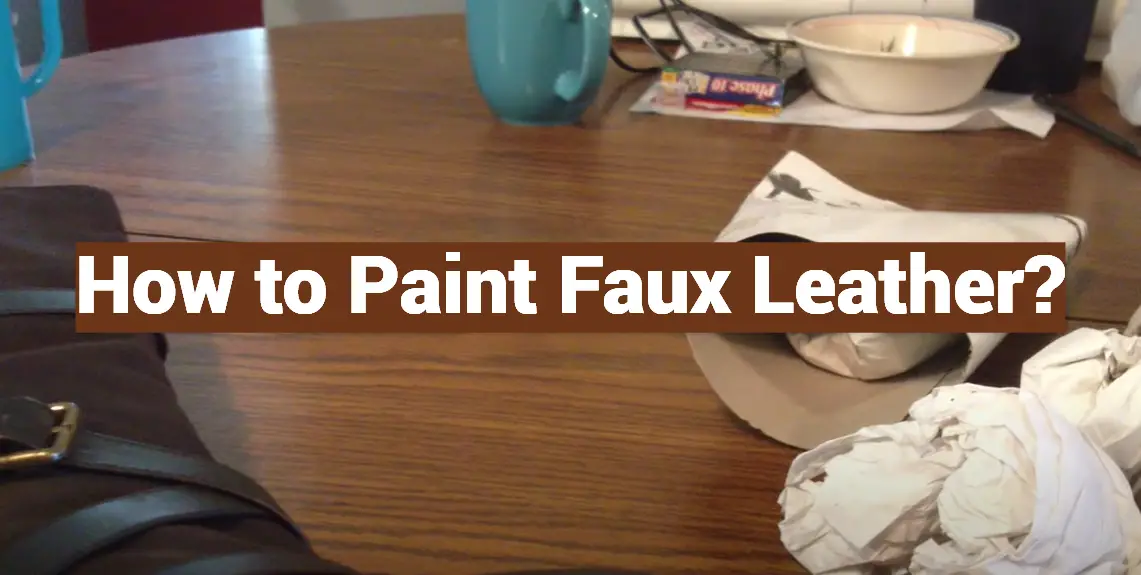


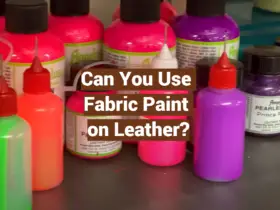


Leave a Reply